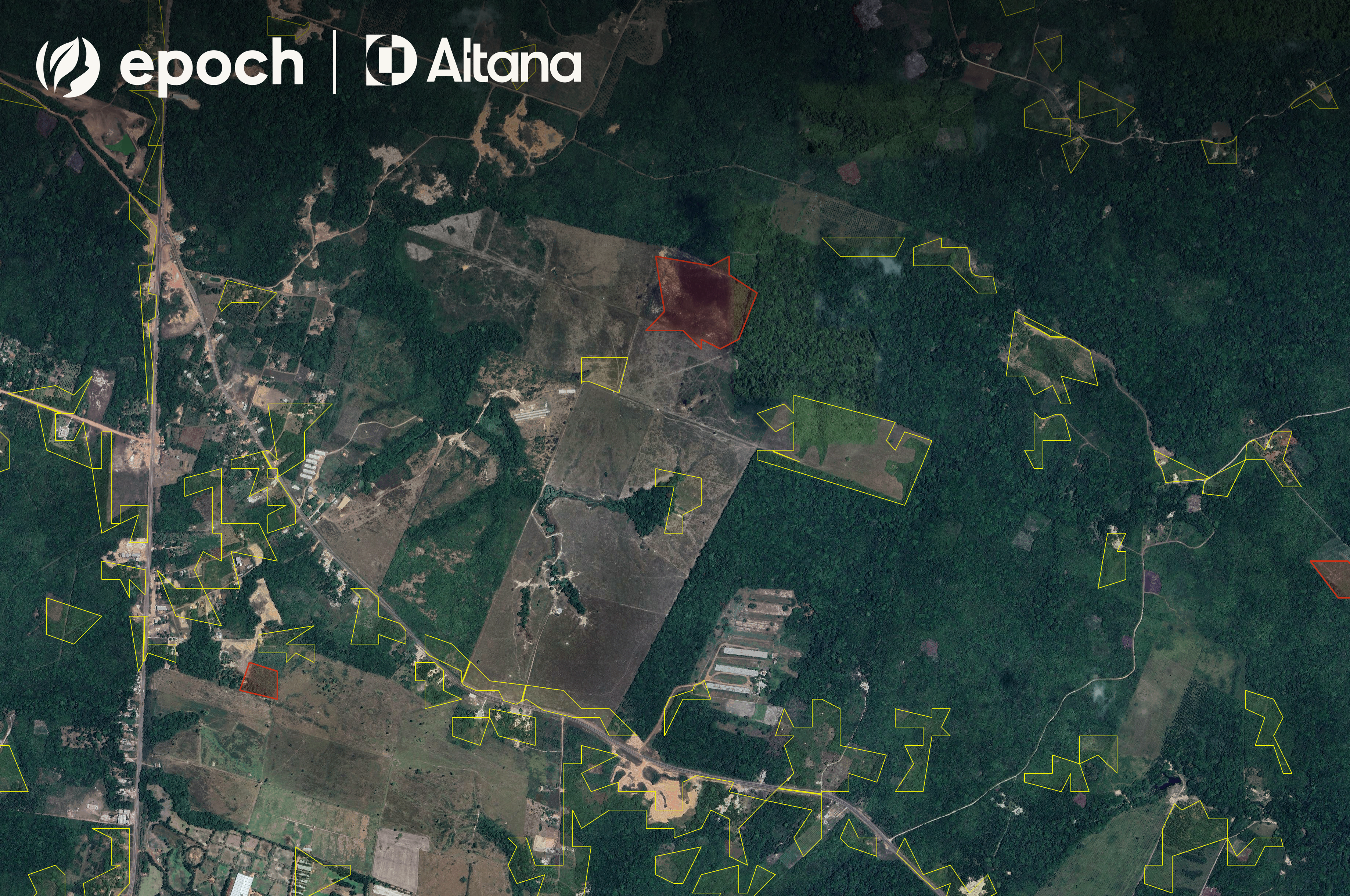A transformative regulation is about to reshape global supply chains — from coffee beans to car tires, the EU's new deforestation regulation means companies must revolutionize how they track commodity origins or risk billions in penalties. After enacting the EU Deforestation Regulation (EUDR) in June 2023, the European Union has set the clock ticking for companies worldwide to fundamentally rethink how they track and verify the environmental impact of their supply chains. This sweeping legislation targets seven key commodities driving global deforestation:
- Timber
- Cattle
- Soy
- Palm Oil
- Coffee
- Cocoa
- Rubber
This also includes their derivatives like furniture, leather, chocolate, and paper. With large operators required to comply by December 30, 2025, and small and medium-sized enterprises by June 30, 2026, businesses must prepare strategically.
"EUDR is a very progressive, forward-thinking legislation,” says Jinal Surti, CEO of Epoch, an AI-driven visibility platform that helps make agricultural and forestry supply chains transparent and sustainable. “The EU took a stand and said we're not going to be the reason for deforestation, and the private sector has to figure out how to comply." The disruption in global supply chain governance marks a seismic shift: companies must now prove their products are both deforestation-free and legally produced with plot-level traceability. While other sweeping regulations, such as the Uyghur Forced Labor Prevention Act (UFLPA), require companies to prove their products aren't made with forced labor, the regulation doesn't require such granular information as knowing the exact production location. EUDR demands far more detailed origin information.
"EUDR is like UFLPA but on steroids,” says Peter Swartz, Chief Science Officer of Altana. “It’s broadly the responsibility to prove the product does not cause deforestation, and that involves all stages of production. Think of the case of a cotton shirt — with UFLPA, I don't have to know where it came from, I just have to be able to prove that the cotton isn't from forced labor. But with EUDR, you need to know where the commodity came from. It implies the task of mapping the production site and the farm plots."
How exactly each country’s trade of EUDR commodities will be impacted will be revealed when the regulation goes into effect, but trends in Altana’s data analysis shows that Germany, for example, imports about $18 million of cocoa that will have to be accounted for. Spain, meanwhile, imports about $1.6 billion in palm oil products. All of these commodities, and more, will be under scrutiny.

Traditional methods of supply chain mapping and environmental verification are proving woefully inadequate for EUDR's unprecedented requirements. The scale and complexity of tracing commodities to specific plots of land across global supply chains demands a revolutionary approach — one that only Altana, through its integration with Epoch — can deliver. By combining multi-tier supply chain visibility with AI-powered satellite monitoring, this partnership transforms what would otherwise be years of manual data collection and costly site visits into an automated, scalable solution that not only ensures compliance but turns a potential regulatory burden into a strategic competitive advantage.
Unprecedented Challenges and Far-Reaching Impacts
The EUDR significantly exceeds previous environmental regulations in both scope and enforcement mechanisms. What's required is unprecedented traceability that demands specific geolocation coordinates for all land parcels where commodities were produced. Companies must conduct risk assessments covering both legal compliance in the country of origin and verification that no deforestation occurred after December 31, 2020. They must also submit a Due Diligence Statement (DDS), a document confirming their commodities comply with EUDR. The environmental impact is substantial: The EU alone is responsible for importing products that account for approximately 13-16% of deforestation associated with global trade, resulting in over 200,000 hectares of cleared forests annually. By promoting deforestation-free products, the regulation aims to reduce greenhouse gas emissions by at least 32 million metric tonnes annually. For businesses, the consequences of non-compliance are severe and immediate. The regulation includes fines of up to 4% of annual EU turnover, product confiscation, or market access restrictions. Beyond these penalties, the regulation is reshaping competitive dynamics, as companies with transparent and sustainable supply chains gain significant advantages in European markets.
A single product could contain regulated commodities from all around the world, meaning that a typical armchair assembled in Europe might still need documentation proving its timber originated from deforestation-free sources in Southeast Asia.
Regulatory enforcement, which increasingly leverages more advanced satellite technology and is influenced by shifting environmental priorities, adds further pressure for companies to maintain meticulous supply chain documentation – or pay the price.
Notably, regulations like EUDR now mandate both legal production and deforestation-free sourcing, creating significant validation changes for businesses dealing with diverse legal frameworks and monitoring capabilities around their sourcing regions.
There’s also no efficient way to complete this kind of first-mile mapping without AI technologies, as Epoch’s Surti explains:
"We talked to a coffee company that sources from roughly 500 suppliers. They send field teams to map the plot boundaries of farmers, and some are smallholder farmers, so it's hundreds of thousands of farms they're trying to plot,” he says. “That process takes five years, and by the time it's done, it’s already outdated and inaccurate for multiple reasons. Maybe farm owners have passed away, someone inherits the land, or the land gets split up. This, in addition to human error in the mapping exercise results in the information being inaccurate."
“We have also encountered a number of cases where legal barriers prevent the first-mile data like plot locations to leave the country of origin, so companies struggle to comply even if that data is available.”
Modernize EUDR Compliance: How to Move Beyond Manual Tracing and Limited Data
Manual methods of tracing commodity origins through several supplier tiers can take hundreds of hours and yield incomplete data that rapidly becomes outdated. Survey tools get only a 10% response rate beyond Tier 1 suppliers, leaving companies blind to the majority of their supply chain risk.
These legacy methods are insufficient to comply with EUDR. To manage risk and meet compliance deadlines, companies need to collaborate with upstream and downstream partners while automating environmental assessments.
Altana’s Epoch integration enables organizations to navigate increasingly complicated EUDR requirements effectively, manage risks, and make strategic decisions. It's the only Product Network connecting buyers, suppliers, and regulators with automated environmental monitoring capabilities, offering these distinct advantages over traditional approaches:
Single Dynamic Platform Instead of Numerous Surveys
- Replace low-response, quickly outdated supplier questionnaires and time-consuming, and onerous field data collection requirements from the first-mile with a continuously updated view of your supply chain
- Transform years of manual data collection into an automated, scalable solution
Multi-Tier Supply Chain Visibility
- Reveal hidden relationships and risks beyond direct suppliers
- Map connections throughout your network using AI and exclusive shipment data
- Address the critical transparency gap in agricultural and forestry supply chains
AI-Powered Environmental Monitoring
- Identify raw material processing facilities tied to your supply chain
- Generate comprehensive sourcing landscapes for each facility
- Detect target commodities with advanced AI, such as distinguishing timber plantations from natural forests
- Pinpoint EUDR non-compliance areas by leveraging best-in-region datasets and satellite assessments to minimize false positives
Automated Risk Assessment and Due Diligence
- Apply AI algorithms to analyze satellite imagery and supply chain data
- Identify potential compliance issues proactively
- Triage approach: clear low-risk sources while focusing on higher-risk suppliers
- Collaborate with suppliers to address non-compliant areas identified in their supply sheds, rather than “boiling the ocean”
- Implement and document mitigation measures where needed
Streamlined Documentation and Reporting
- Automatically generate submission-ready documentation for EUDR meeting regulatory requirements
- Automate Due Diligence Statement preparation with built-in validation checks
- Automated Legality and Risk Assessment (EUDR Article 10) based on the supplier’s location
- Maintain comprehensive audit trails of all EUDR-related processes
Strategic Regulatory Alignment
- Support compliance with multiple regulations beyond EUDR
- Leverage the same data and processes for CSRD, CSDDD, and forced labor prevention measures like UFLPA
- Transform regulatory burden into a strategic competitive advantage





